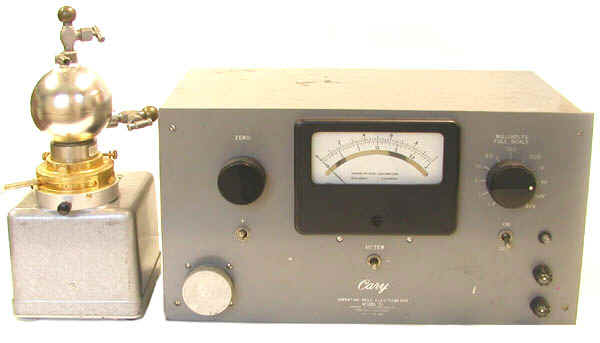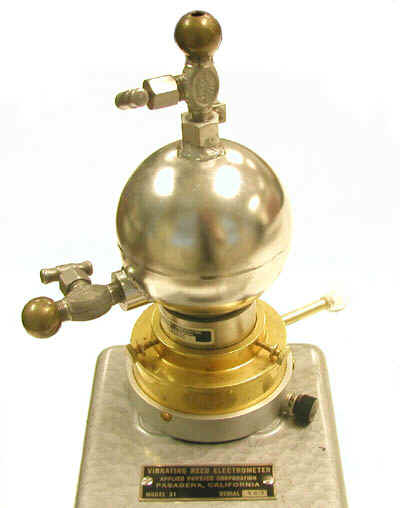Cary Vibrating Reed Electrometer with Ionization Chamber (late 1950s)
The spherical ion chamber, electrometer head, and amplifier were made by Applied Physics Corporation of Pasadena, California. The Model 31, which replaced the Model 30, was introduced in 1957/1958 and seems to have been superseded by the Model 32 in 1959.


This system would have been used to measure the activity of chemically unreactive gases such as krypton, xenon, CO2 and HT. Either the gas being analyzed would flow through the chamber or be held inside the chamber for the duration of the measurement. The weak current generated in the chamber (less than 10-12 amperes) was converted into an alternating current by the vibrating reed in the electrometer head. The AC current was then amplified and fed to a strip chart recorder. The electrometer readout employed multiple scales and measured up to 30 volts.
The spherical ion chamber, shown to the right, is connected directly to the electrometer head. Made of stainless steel, it is approximately 3" in diameter and has a 250 ml volume. The original version of the chamber was made of Pyrex.
The reed, a thin metal plate, was vibrated by an electromagnet at frequency of 450 cycles per second. The reed also formed part of a capacitor onto which the current from the chamber was sent. The cyclical movement of the reed resulted in a fluctuating capacitance and the generation of an alternating current. The advantage the AC signal had over the original DC signal was that the former could be amplified much more reliably.
Donated by William (Pat) Miller.
References
- Cary Model 31 Vibrating Reed Electrometer Instruction Manual, Applied Physics Corporation. No date, but contains drawings dated 1957.
- Advertisement in Nucleonics, March 1958, page 109.
